MALARIA
The late 19th and early 20th century formed an important period for Gregoriopolis, modern Ostia Antica, with its borgo and rocca. In 1765, 156 people were living in the borgo, mostly working in the salt pans. But then the waterway near Portus was reopened and the people moved to nearby Fiumicino, glad to leave the malaria-infested marshes of Ostia. In the early nineteenth century the people living in the borgo were for the most part prisoners, put to work in the excavations. But excavations only took place during the winter, not the dangerous summer, when only people who had become immune stayed behind.
In 1884 some 500 unemployed young men and 50 women arrived at the Tiber delta from Ravenna. They had drained marshes in Emilia-Romagna and would now do the same in Ostia, hoping to build a new future for themselves. Many of the colonists lived at first in Fiumicino. To reach Ostia they had to cross the Tiber using a ferry ("scafa"), until bridges were built (two bridges were finished in 1916 and destroyed by the Germans in 1943; they were replaced by the present Ponte della Scafa in 1950). Many of the Ravennati settled in Ostia. When they arrived the area was frequented by nomadic farmers, living in extremely tall huts. In the borgo they found one inhabitant.
Supported by king Umberto I the immigrants started draining the marshes by pumping the water to the sea through channels, the "bonifica". Before the work was finished, twenty percent fell victim to the malaria. In 1904 the area was much safer, and in 1911 3600 people lived in and near the borgo. From 1912 there was a bus service between Rome and the new seaside resort Lido di Ostia, three kilometres from Ostia Antica. The construction of a railroad was begun during the First World War - Austrian prisoners of war were used as labourers. The track included a station in Ostia Antica, and was inaugurated by Mussolini in 1925.
Many descendants of the Ravennati still live in the centre of Ostia Antica. There you will also find the Parco dei Ravennati and Piazza Umberto I, while the main thoroughfare is called Viale dei Romagnoli. Ristorante Monumento dates back to 1884. Here a meal was enjoyed by Benito Mussolini, Richard Burton, Elisabeth Taylor, Richard Nixon, Jaqueline Kennedy, Marcello Mastroianni, François Mitterand, the Dalai Lama, Mikhail Gorbachev, Arnold Schwarzenegger, and Federico Fellini.[1]
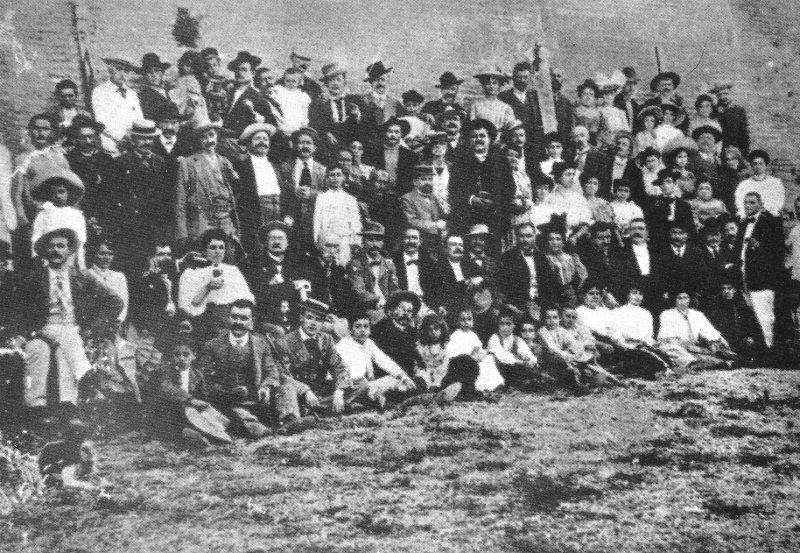
The Ravennati who went to Ostia. From De Nisi 1982, fig. on p. 26.
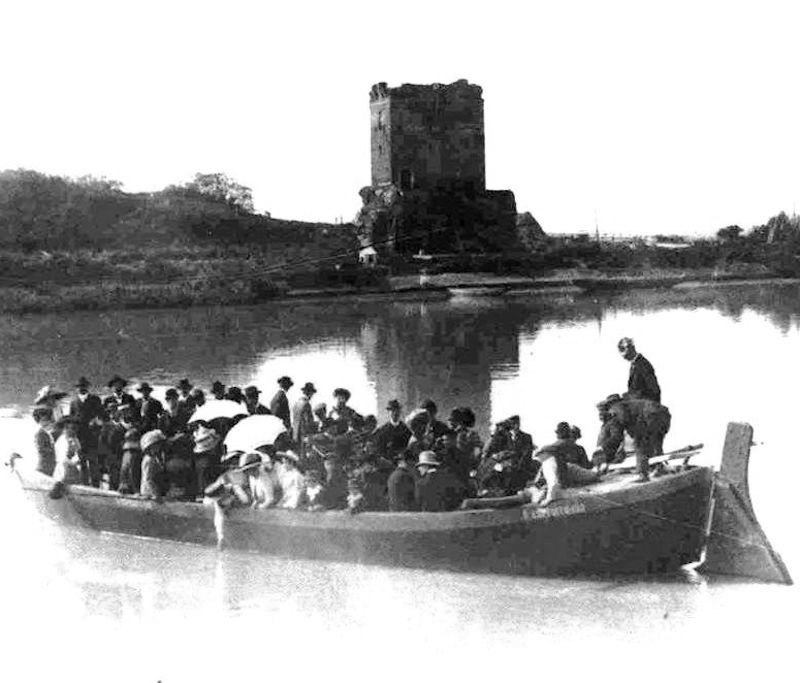
The ferry across the Tiber. In the background is Tor Boacciana.
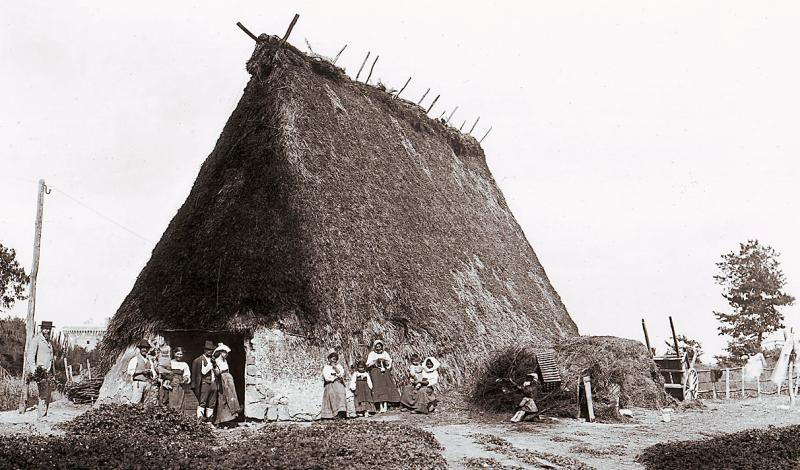
A hut of nomadic farmers. Shepherd 2006, fig. 13.
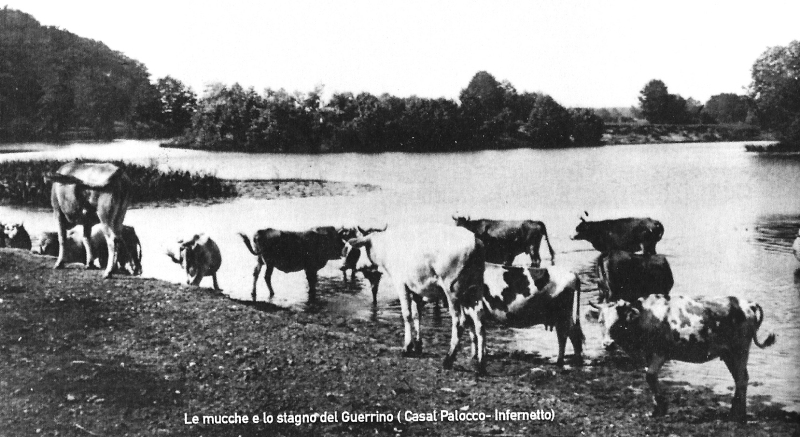
The marshes near Ostia. From Monumento 1884, fig. on p. 8.

The Ravennati at work. From Monumento 1884, fig. on p. 15.
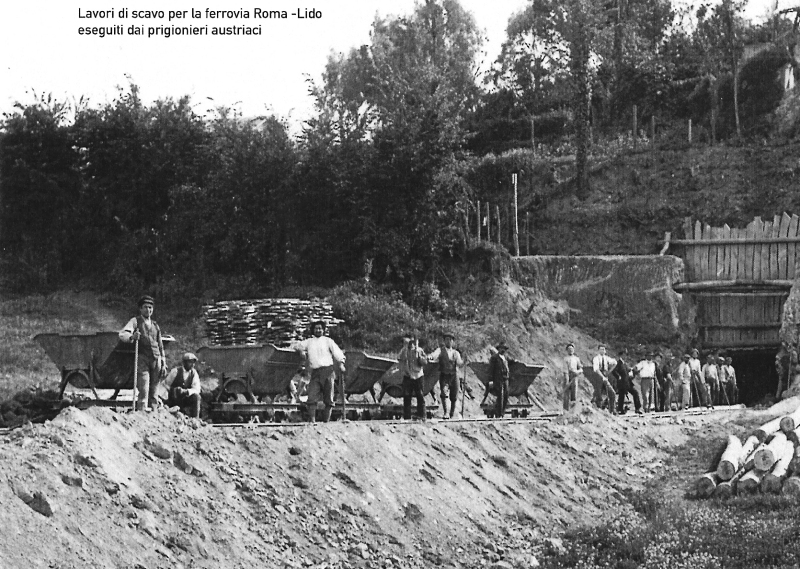
Austrian prisoners of war building the railroad. From Monumento 1884, fig. on p. 59.
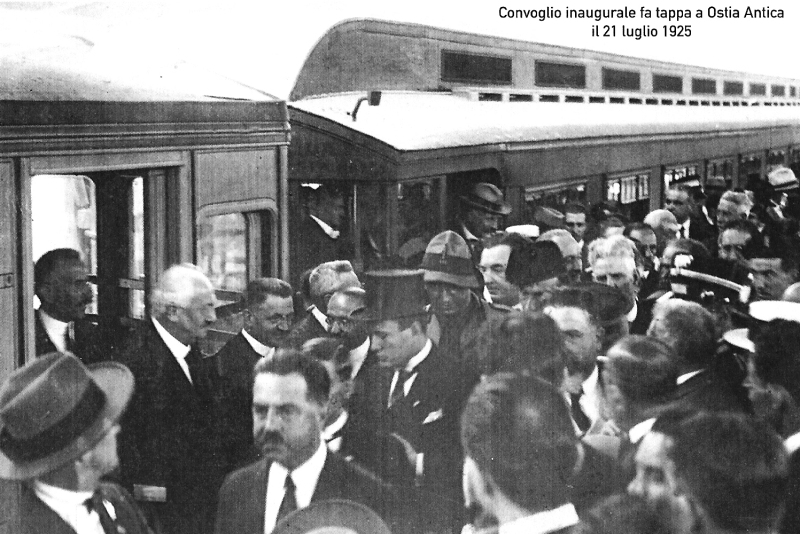
Mussolini (with top hat) at the station of Ostia Antica during the inauguration of the railway.
From Monumento 1884, fig. on p. 60.
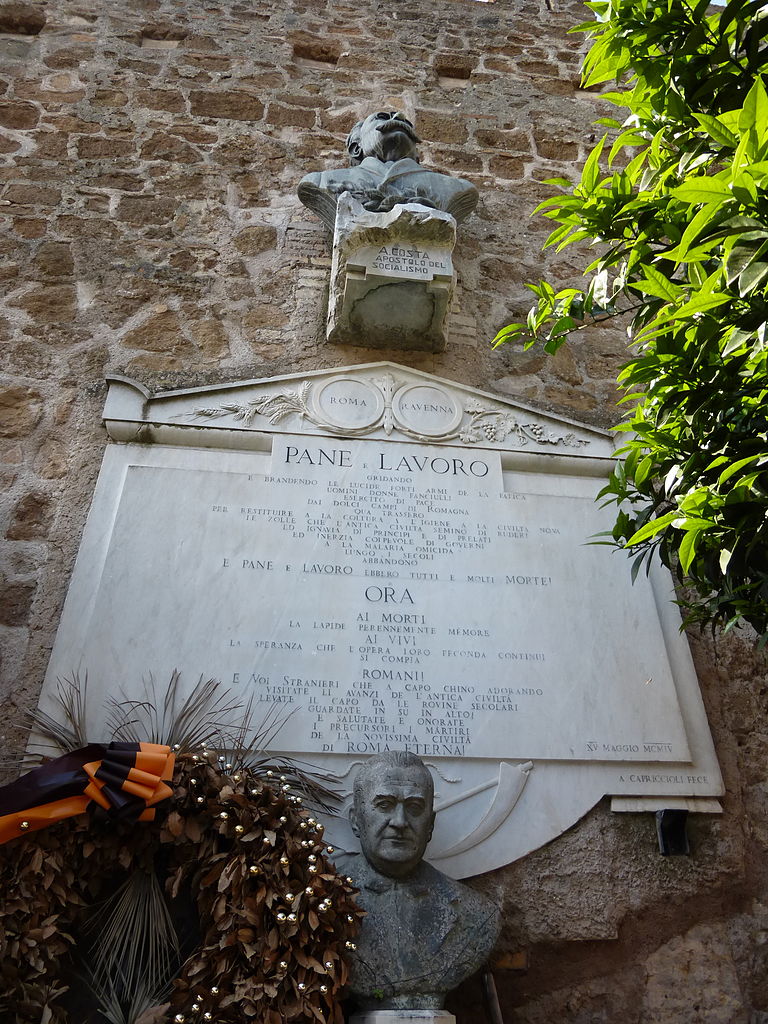
A monument for the Ravennati in Ostia Antica. Photo: Wikimedia, Lalupa.
[1] C. Dini - L. Battagli, Monumento dal 1884. Un Ristorante nella Storia del Borgo, Roma 2017.